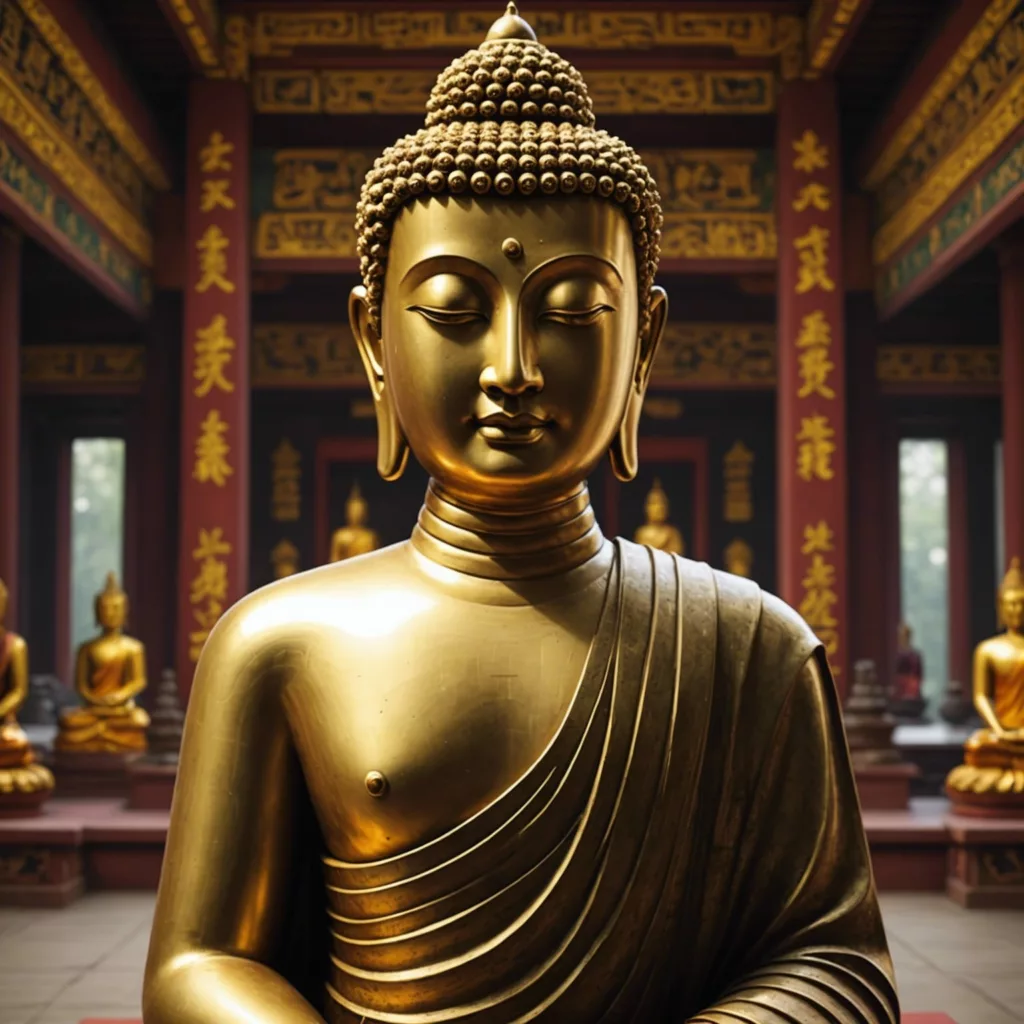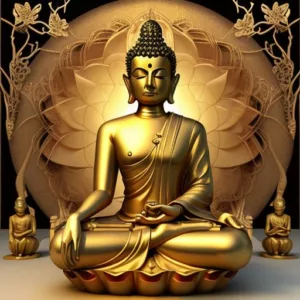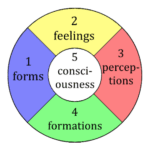
Jhana meditation, also known as access concentration, cultivates a state of deep mental focus and serenity, offering a taste of true inner peace.
Jhana, as I understand it, is actually a bit controversial. We might go too deep into meditation, according to some teachers, and this absorption causes us to miss the key insight into emptiness. I would think this would mainly miss the emptiness of phenomena, since jhana states tend to exclude the material world somewhat.
If the dhyana state focuses on the mind, it would seem to be able to penetrate that to gain understanding.
Secrets of Meditation for Anxiety
Like millions of people, you may have suffered from anxiety for years. Meditation, yoga, peaceful music – it never works. It takes too long, and it’s not stable. Why? Because peace is treated as a cause for freedom, but it’s not – it’s the result. The cause to free yourself from anxiety is completely different.
Click now to Overcome Anxiety for good.
Table of Contents
Introduction:
Ever feel like your mind is a million miles an hour, with thoughts pinging around like a pinball machine on overdrive? Meditation has become increasingly popular in recent times, and for good reason. It’s a practice that can help us cultivate inner peace, focus, and clarity – a welcome change from the mental mayhem many of us experience daily.
There are many different meditation techniques, but Jhana meditation stands out as a powerful tool for diving deep within ourselves. Jhana, pronounced “juh-HAH-na,” literally translates from Pali (a language used in early Buddhist texts) as “absorption” or “mental state.” In Sanskrit, it’s called “dhyana,” which is the root of our English word “meditation.” Practicing Jhana leads to profound mental states characterized by intense focus, joy, and a deep sense of tranquility. It’s like training your mind to become a laser beam, cutting through distractions and achieving a state of pure, concentrated awareness.
Jhana meditation has a long and rich history, particularly within Theravada Buddhism, the oldest surviving branch of Buddhism. Theravada Buddhists see Jhana as a crucial stage on the path to enlightenment, offering a taste of the profound peace and clarity that enlightenment brings.
How to meditate like a yogi
and enter profound samadhi
Jhana Meditation Summary
| Property | Description |
|---|---|
| Central Node | Jhana Meditation (Pali: Jhana, Sanskrit: Dhyana) |
| Definition | A meditation technique in Theravada Buddhism leading to deep mental absorption, intense focus, joy, and tranquility. |
| Related Concepts | * Samadhi (mental discipline) * Sila (ethical conduct) * Mindfulness Meditation * Annapana (Breath Meditation) * Metta (Loving-kindness Meditation) |
| Progression | Four progressive levels of Jhana, each offering a deeper state of mental absorption. |
| Core Experience | Intense focus, joy, tranquility, and a sense of mental calmness. |
| Benefits | * Increased mental clarity and focus * Reduced stress and anxiety * Enhanced emotional regulation * Deeper understanding of oneself * Cultivation of mindfulness and tranquility |
| Preparation | Requires a foundation in ethical conduct (Sila) and mental discipline (Samadhi). |
| Meditation Techniques | * Annapana (focusing on breath) * Metta (cultivating loving-kindness) |
| Significance in Buddhism | Seen as a crucial stage on the path to enlightenment in Theravada Buddhism. |
Understanding Jhana
Jhana, pronounced “juh-HAH-na,” is a term that pops up frequently in Buddhist meditation circles. It literally translates from Pali (an ancient Indian language) as “absorption” or “mental state,” and in Sanskrit, it’s called “dhyana,” which is the root of our English word “meditation.” But Jhana meditation isn’t just any kind of meditation. It’s a powerful technique designed to cultivate a state of deep mental absorption, a place where your mind becomes laser-focused and incredibly calm.
Imagine your mind right now – it’s probably flitting from thought to thought like a butterfly in a garden. Jhana meditation is like training your mind to become a laser beam. It cuts through all the distractions, anxieties, and mental chatter, achieving a state of pure, concentrated awareness. You experience intense focus, but it’s not a tense or strained focus. Instead, it’s accompanied by a deep sense of joy and tranquility, like finding a hidden oasis of peace within yourself. This profound state of mental absorption is the core experience of Jhana.
The Benefits of Jhana Meditation
Imagine feeling like your mind is a crystal-clear lake, reflecting the world perfectly with no ripples or disturbances. That’s the kind of mental clarity dhyana meditation can cultivate. Regular practice brings a whole host of benefits that spill over into your daily life. Here are just a few:
- Sharpened Focus: Jhana trains your attention to be laser-focused, allowing you to tackle tasks with greater concentration and efficiency. No more getting sidetracked by the latest notification or random thought!
- Stress Buster: Feeling overwhelmed? Jhana meditation helps you cultivate a sense of inner calm and peace, acting as a powerful antidote to stress and anxiety. It’s like hitting a mental reset button and finding your center.
- Emotional Chiller: Jhana practice teaches you to observe your emotions without getting swept away by them. You learn to regulate your emotional responses, leading to more balanced and healthy relationships with yourself and others.
- Knowing Yourself, Better: Jhana meditation provides a quiet space to turn inward and gain a deeper understanding of your own mind and thought patterns. It’s like exploring a hidden landscape within yourself, uncovering new layers of your being.
- Inner Oasis: Jhana practice cultivates a sense of inner peace and tranquility that becomes your personal oasis in the midst of life’s ups and downs. It’s a place you can return to for a sense of calm and well-being.
Preparing for Jhana Meditation
Before embarking on your Jhana journey, it’s important to establish a foundation of ethical conduct (Sila) and mental discipline (Samadhi). Think of it like building a sturdy house – you need a strong base for your meditation practice to flourish. Sila involves living a moral life, avoiding actions that cause harm to yourself or others. This creates a sense of inner harmony that supports meditation. Samadhi, or mental discipline, involves practices like mindfulness meditation that train your mind to stay focused and present. These practices help prepare your mind for the deep concentration required in Jhana.
Finding a quiet and comfortable place to meditate is also key. Imagine a cozy nook where you won’t be interrupted – it could be a quiet corner of your room, a meditation hall, or even a serene spot in nature. The important thing is to create a space that feels calming and conducive to focusing your mind.



The Four Jhanas
Jhana meditation isn’t a one-size-fits-all experience. There are actually four progressive levels, each offering a deeper state of mental absorption. Think of them like climbing a mountain – with each level, you ascend to a higher plateau of focused awareness.
The first Jhana is characterized by a sense of initial joy and rapture. It’s like experiencing a wave of happiness washing over you as your mind quiets down. As you progress to the second Jhana, the intense joy becomes more subtle, replaced by a deep sense of tranquility and peace. The third Jhana dives even deeper, with a sense of ease and lightness pervading your mind and body. Finally, the fourth Jhana is one of pure equanimity, where you experience a balanced and unshakeable state of awareness.
It’s important to note that these are just brief descriptions, and the actual experience of Jhana can be quite profound and unique for each individual.
Jhana Meditation Techniques
Now, how do you actually unlock these Jhana states? There are two main meditation objects used to cultivate Jhana:
- Annapana (Breath Meditation): This involves focusing your attention on the natural flow of your breath. As you inhale and exhale, you simply observe your breath without judgment, using it as an anchor to keep your mind present.
- Metta (Loving-kindness Meditation): Here, you cultivate feelings of kindness and goodwill towards yourself and others. You can start by directing loving-kindness to yourself, then gradually expanding it to loved ones, neutral people, and even those you find challenging. This practice fosters a sense of peace and positivity that can be a springboard for Jhana.
By regularly practicing these techniques and developing a strong foundation in mindfulness, you can begin to cultivate the deep concentration and tranquility that Jhana offers. Remember, it’s a journey, not a destination. So, be patient, kind to yourself, and enjoy the process of exploring the inner landscapes of your mind.

May all beings be happy
May all beings be peaceful
May all beings be safe
May all beings awaken to the light of their true nature
May all beings be free







